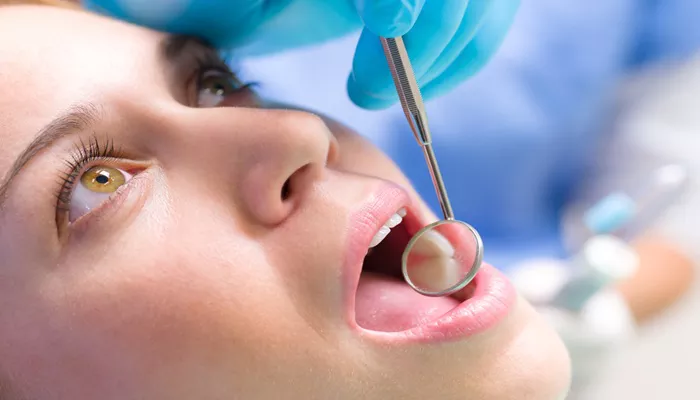Body cavities are fluid-filled spaces within the human body that house and protect vital organs. These cavities are crucial for maintaining the structural integrity and functional efficiency of the body. The two primary body cavities are the dorsal cavity and the ventral cavity, each further subdivided into smaller cavities. Understanding these cavities is essential for medical professionals, including dental care experts, as they provide a framework for diagnosing and treating various health conditions.
Overview of the Dorsal Cavity
The dorsal cavity, located at the posterior (back) of the body, is divided into two main subdivisions: the cranial cavity and the spinal cavity.
Cranial Cavity: This cavity is situated within the skull and encloses the brain. The brain is protected by the bones of the skull and cerebrospinal fluid, which cushions it and provides a stable environment for its function. The cranial cavity is a large, bean-shaped space that fills most of the upper skull.
Spinal Cavity: Also known as the vertebral cavity, this narrow, thread-like cavity extends from the cranial cavity down the entire length of the spinal cord. It is enclosed by the vertebral column and contains the spinal cord, which is also protected by cerebrospinal fluid.
Overview of the Ventral Cavity
The ventral cavity, located at the anterior (front) of the trunk, is divided into two main subdivisions: the thoracic cavity and the abdominopelvic cavity.
Thoracic Cavity: Enclosed by the rib cage, this cavity is further subdivided into the pleural cavities and the pericardial cavity. The pleural cavities contain the lungs, while the pericardial cavity houses the heart. The thoracic cavity is separated from the abdominopelvic cavity by the diaphragm, a dome-shaped muscle that facilitates breathing.
Abdominopelvic Cavity: This is the largest body cavity, extending from the diaphragm to the pelvic floor. It is not physically divided but can be functionally separated into the abdominal cavity and the pelvic cavity.
The abdominal cavity contains organs of digestion, such as the stomach, intestines, liver, and kidneys, along with other vital organs like the spleen and pancreas. The pelvic cavity, located below the abdominal cavity, houses the bladder, reproductive organs, and parts of the digestive system.
Detailed Examination of the 7 Major Body Cavities
1. Cranial Cavity
Location: Inside the skull.
Contents: Brain.
Protection: Bones of the skull and cerebrospinal fluid.
Function: Houses and protects the brain, facilitating its function and maintaining its structural integrity.
2. Spinal Cavity (Vertebral Cavity)
Location: Along the vertebral column.
Contents: Spinal cord.
Protection: Vertebral column and cerebrospinal fluid.
Function: Protects the spinal cord, ensuring the transmission of nerve impulses throughout the body.
3. Thoracic Cavity
Location: Enclosed by the rib cage.
Contents: Lungs and heart.
Subdivisions: Pleural cavities for the lungs and pericardial cavity for the heart.
Protection: Rib cage and diaphragm.
Function: Houses vital organs involved in respiration and circulation.
4. Pleural Cavities
Location: Within the thoracic cavity.
Contents: Lungs.
Protection: Pleura, a serous membrane.
Function: Facilitates lung expansion and contraction during breathing.
5. Pericardial Cavity
Location: Within the thoracic cavity.
Contents: Heart.
Protection: Pericardium, a serous membrane.
Function: Allows the heart to expand and contract without friction, ensuring efficient blood circulation.
6. Abdominal Cavity
Location: Part of the abdominopelvic cavity.
Contents: Digestive organs (e.g., stomach, intestines), kidneys, spleen, liver, pancreas.
Protection: Peritoneum, a serous membrane.
Function: Houses organs involved in digestion and excretion.
7. Pelvic Cavity
Location: Part of the abdominopelvic cavity.
Contents: Bladder, reproductive organs, and parts of the digestive system.
Protection: Pelvic bones and peritoneum.
Function: Houses organs involved in reproduction and excretion.
Conclusion
In conclusion, the seven major body cavities—cranial, spinal, thoracic, pleural, pericardial, abdominal, and pelvic—play crucial roles in protecting and supporting the body’s vital organs. Understanding these cavities is essential for medical professionals to diagnose and treat conditions effectively. Each cavity is specialized to house specific organs and facilitate their functions, ensuring the overall health and well-being of the individual. As a dental care expert, recognizing the interconnectivity of these cavities can enhance patient care by providing a comprehensive understanding of the body’s internal structures.

